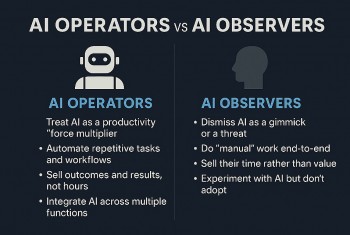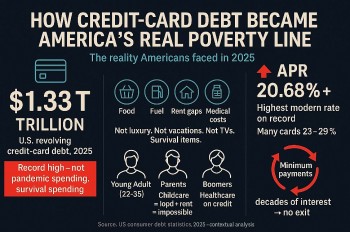Trump’s Tariffs: Mortgage Rates Drop, But Housing Affordability Crisis Worsens
 How To Get A Reverse Mortgage and How Much Can I Borrow? How To Get A Reverse Mortgage and How Much Can I Borrow? |
 7 Ways a Reverse Mortgage Can Help You in Retirement 7 Ways a Reverse Mortgage Can Help You in Retirement |
 |
| Mortgage rates tumble on tariffs, but housing costs still near record high |
Mortgage Rates Fall Amid Market Turmoil
On Thursday, April 3, mortgage rates fell sharply, with the average 30-year fixed mortgage plunging 12 basis points to 6.63%, according to Mortgage News Daily. This marks the lowest level since October 2024 and reflects investor flight to safety after a steep sell-off in the stock market. The 10-year U.S. Treasury yield—a key benchmark for mortgage rates—fell as bond demand surged.
“Markets have heard enough to brace for impact on global trade,” wrote Matthew Graham, COO at Mortgage News Daily, signaling broader economic concern beyond housing.
This drop in rates could, in theory, be a boon for the housing market, especially as the busy spring season gains momentum. But in practice, affordability remains strained due to elevated home prices and rising construction costs exacerbated by tariffs.
Tariffs Drive Up Construction Costs
Roughly 8% of materials used in U.S. homebuilding are imported, and the new tariffs are expected to add as much as $10,000 to the cost of building a home. Lumber, aluminum, and steel are particularly affected. Builders are already contending with labor shortages and supply chain delays, so these new cost pressures are tightening margins and pushing up new home prices.
Meanwhile, the stock market's reaction has been swift. Homebuilding giants like Lennar (LEN) and D.R. Horton (DHI) saw shares drop 6.3% and 4.4%, respectively, on April 3, signaling investor anxiety about the sector’s outlook.
Affordability: A Growing Crisis
Even with the rate drop, the average U.S. homebuyer’s monthly payment reached a record $2,802 in the four weeks ending March 30, according to Redfin. That figure is up 3.4% year-over-year, with home prices and mortgage costs outpacing wage growth.
A deeper look at affordability reveals an even more troubling picture:
 |
| The housing costs still near record high |
While supply is rising—new listings jumped 10% YoY in March and active listings climbed 28%—much of that supply isn’t at affordable price points. The homes coming online tend to be mid-to-upper market, not the lower-priced inventory that’s in highest demand.
Regional Trends: Some Markets Hit Harder
Pending home sales are down nationally, falling 5.2% YoY in major metro areas. Markets in Florida are seeing steeper slowdowns:
-
Jacksonville: –15.1%
-
Miami: –13.7%
-
Virginia Beach: –14.2%
These declines are linked to reversed pandemic-era migration and softening demand amid economic uncertainty.
Market Outlook: Spring Buyers Cautious, But Hopeful
Despite improving mortgage rates, affordability constraints and economic anxiety are holding buyers back. “The high cost of buying coupled with growing economic concerns suggest a sluggish response from buyers in early spring,” said Danielle Hale, Chief Economist at Realtor.com. However, she added that “recent improvements in mortgage rates bode well for the later spring and early-summer housing season.”
Real estate agents like Matt Ferris of Redfin in Northern Virginia confirm a rise in seller interest. “Some believe we’re at the top of the market and want to get top dollar. Others are worried about job security, especially with government work,” he said.
Conclusion: A Market at a Crossroads
Trump’s tariff policy has introduced new volatility into an already fragile housing market. While rates are falling, offering temporary relief, affordability remains a structural issue driven by high prices and income disparity. The coming months will test the resilience of both buyers and sellers, with inflation risks, job stability, and Fed policy looming large.
 Trump’s Reciprocal Tariffs: Full List of Affected Countries Trump’s Reciprocal Tariffs: Full List of Affected Countries U.S. President Donald Trump Unveils Global Reciprocal Tariffs: Full List of Targeted Countries and Sectors Announced at White House Event. |
 Wall Street Tumbles After Trump Tariffs Shock Markets: Apple, Tesla, Amazon Among Hardest Hit Wall Street Tumbles After Trump Tariffs Shock Markets: Apple, Tesla, Amazon Among Hardest Hit A new trade war looms, stocks nosedive, and investors brace for prolonged volatility. |
 Gold Price Holds Firm Above $3,130 as Trump’s Tariff Shock Sparks Market Jitters Gold Price Holds Firm Above $3,130 as Trump’s Tariff Shock Sparks Market Jitters Spot gold was up 0.6% at $3,129.46 an ounce at 04:53 p.m. EDT (2053 GMT). U.S. gold futures settled 0.6% higher at $3,166.20. |
 Where Are Heard Island and McDonald Islands, the Uninhabited Territory Targeted by Trump Tariffs? Where Are Heard Island and McDonald Islands, the Uninhabited Territory Targeted by Trump Tariffs? In a surprising twist to his trade policy announcements, former President Donald Trump included one of the world’s most remote and uninhabited regions in a ... |
 Trump New Tariffs: Why Russia, North Korea, and Canada Got a Free Pass Trump New Tariffs: Why Russia, North Korea, and Canada Got a Free Pass Trump’s New Tariffs Shake the World—But Russia, North Korea, and Canada Escape. Why? |























